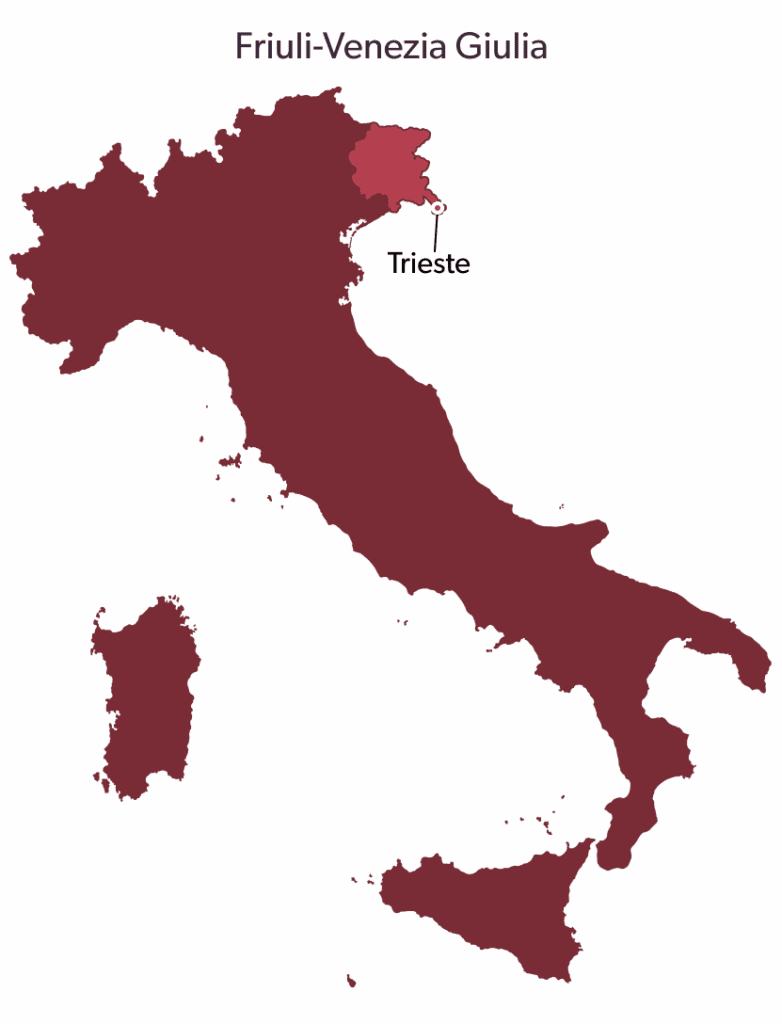- Wine -
- Territory
Gorizia, Discover the authentic city
Prosecco DOC has an indissoluble bond with the earth. A powerful bond that has found an ideal complement in its new expression: Rosè. Wines are two sides of the same coin, like Yin and Yang, like the moon and the sun. From the tradition of the Friulian lands to tables all over the world.
The province of Gorizia is located in the south-eastern area of Friuli Venezia Giulia, on the border with Slovenia and overlooks the Adriatic Sea. Gorizia offers excellent views with its typical landscapes. It has a rich history with a particular artistic vein thanks to different cultural influences, including Germanic, Slavic and Latin influences.
For the beauty of its buildings, Gorizia was called the “Austrian Nice” by the Habsburg aristocracy. Gorizia is a small and pleasant city, where it’s royal past still lives on in the palaces and beautiful gardens found throughout the city, including the splendid Viatori, also known as the Azalea garden.
Gorizia is also a symbol of the troubled history of the twentieth century in Europe. Formerly a town in the territory of the Austro-Hungarian Empire until it was annexed to Italy in 1918 after WWI, Gorizia has been witness to many dramatic events involving Italy’s eastern border during Fascism and the Second World War.
During WWII the city was split in two parts, with a section of Gorizia being part of the former Yugoslavia. The territory was divided by the so-called “wall of Gorizia”, which was erected in Piazza Transalpina and became one of the symbols of the political-ideological separation between Western and Eastern Europe during the years of the Cold War. The border wall was demolished with the entry of Slovenia into the European Union in 2004 and today the borderline is a symbol of unity between the two nations. Piazza della Transalpina is divided between the municipalities of Gorizia and Nova Gorica, in Slovenia, where the border wall once stood there is now a row of bricks to indicate the border, making it possible to simultaneously be in two different countries at once.
Throughout the city, there are many monuments and places of historical and artistic interest that are worth visiting, some include:
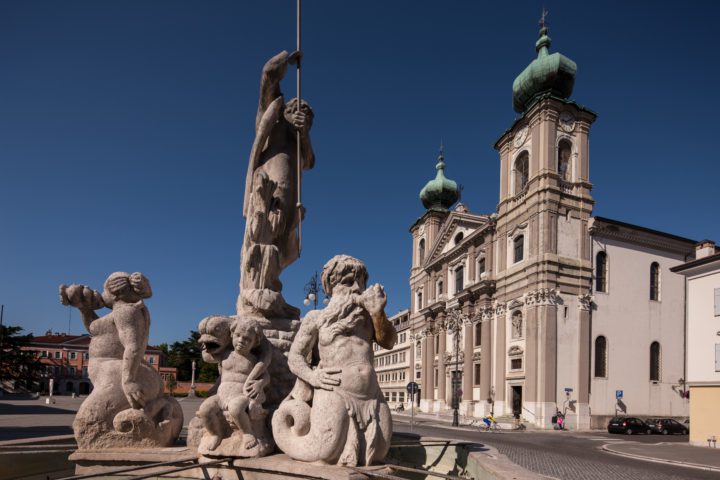
Piazza della Vittoria: Piazza Vittoria, originally a grassy clearing called “Travnik” (meadow), which was overlooked by some stately buildings and some artisan shops, has been considered a center of city live since the eighteenth century, the period of economic growth for the city.
The main building that dominates the square is the church of Sant’Ignazio, an imposing baroque structure built by Jesuits, present in Gorizia since 1615. At the center of the square is the Neptune Fountain and the Tritons, made in 1756 by the Paduan Marco Chiereghin designed by Nicolò Pacassi (a Gorizian architect much appreciated by the Habsburgs and designer of the Schönbrunn palace). Many historical events took place in Piazza Vittoria: on September 20, 1938, Benito Mussolini made a speech from the prefectural building to a large crowd of Gorizian citizens as well as the tragic suicide of of the 23-year-old Gorizia philosopher Carlo Michelstaedter , a leading figure in the European philosophical landscape of the early twentieth century in October 1910.
Via Del Rastello: One of the most picturesque streets of the city directly connected to Piazza Vittoria. Its name comes from the gate that, during the night, during the Middle Ages, separated the citadel from the countryside. It has long been a characteristic pedestrian street and for most of the twentieth century it was the economic center of Gorizia.e
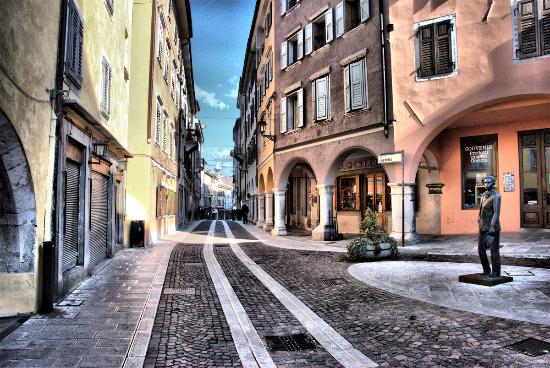
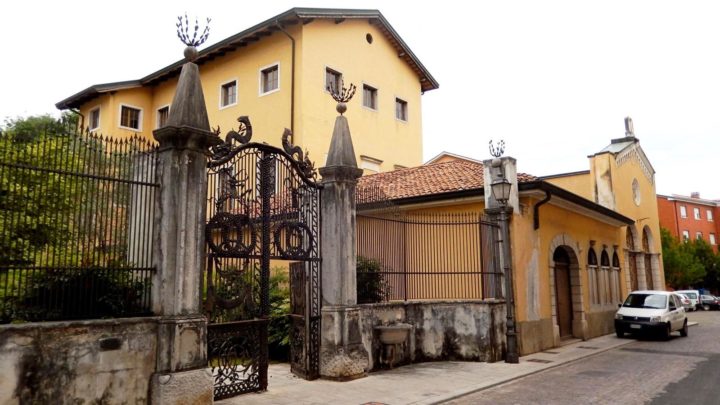
The Synagogue of Gorizia: Located in Gorizia’s ancient Jewish quarter, where the Jewish Community of Gorizia settled in the 1600s. The synagogue is the most representative building of the city’s Jewish history, the Synagogue also houses the educational museum of Little Jerusalem on the Isonzo, where it is possible to learn about the Jewish community of Gorizia, its traditions and its links with the great Central European culture.
Gorizia Castle: Dating back to the 11th century, the Gorizia Castle is the ancient heart of the city. Located on the hill overlooking the town, it offers a spectacular panoramic view of Gorizia and the surrounding area.
Its current appearance does not exactly reflect the original one as it was demolished by the Venetians for defense reasons, today only the foundations remain visible inside the Lanzi court. The castle reflects the evolution that took place between the 13th and 16th centuries with the addition of buildings and defensive structures. The castle changed owner several times, passing from the hands of the counts of Gorizia, the Church of Aquileia, and finally to the Habsburg dynasty.
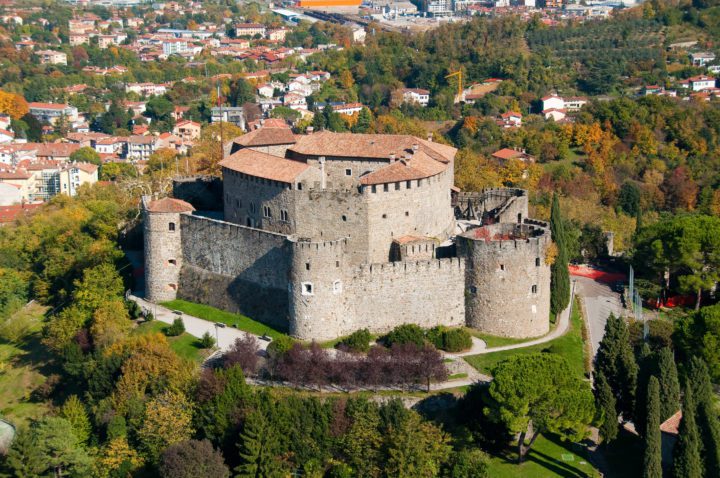
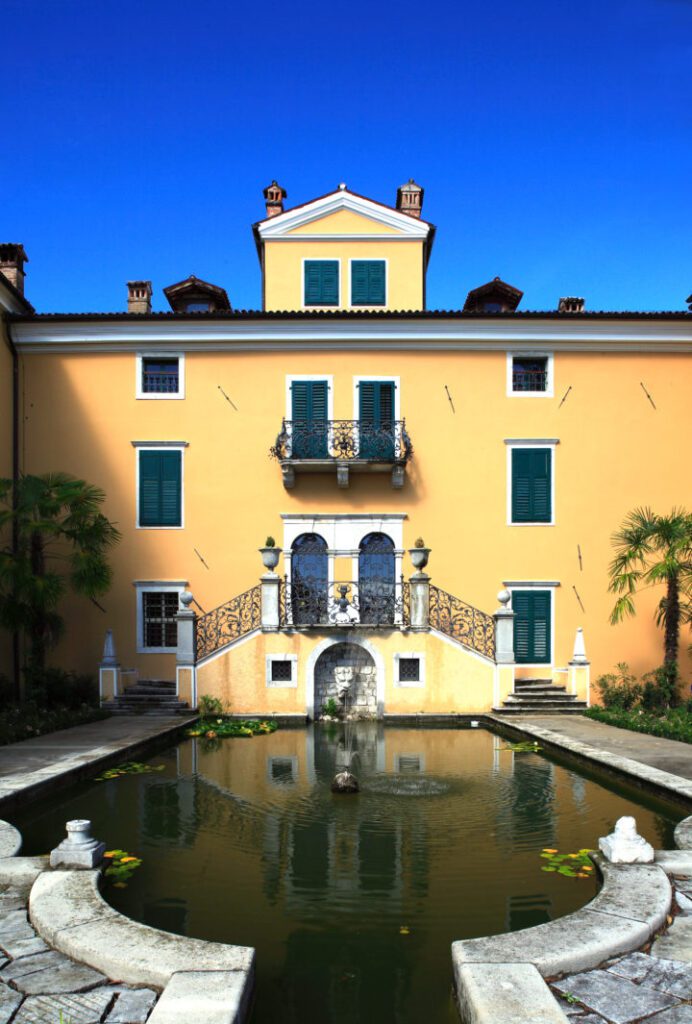
Palazzo Coronini Cronberg: A historic home dating back to the end of the sixteenth century. Walking through the fifteen rooms that make up the palazzo, including the room where Charles X of Bourbon died, the last king of France in 1836, visitors are transported back in time, thanks to the historic atmosphere of the rooms with seventeenth-century furnishings and luxurious decor.
The coastal stretch is dominated by the magnificent Grado lagoon, an internationally renowned tourist destination, with golden beaches and a suggestive intertwining of canals between islands and islets. There are two protected areas in this pristine environment, ideal habitats for numerous bird species: the Cavanata Valley Nature Reserve and the Isonzo Mouth Nature Reserve, where Camargue horses also live in the wild. The fertile Isonzo plain, famous for producing excellent wines, has large expanses of vineyards, picturesque villages and panoramic views of singular beauty.
Another characteristic landscape is constituted by the Collio, the land of the great Friulian wines: a succession of hills covered by vines and dotted with small villages such as Oslavia, Dolegna del Collio and Cormons.
The testimonies of a troubled past up to more recent times and the coexistence of different cultures are the distinctive elements of the Gorizia area, a unique land to be discovered that unites and encompasses other realities like a mosaic.
No results found.
NULL00
No results found.
NULL00
NULL00
No results found.
NULL00
No results found.
NULL00

